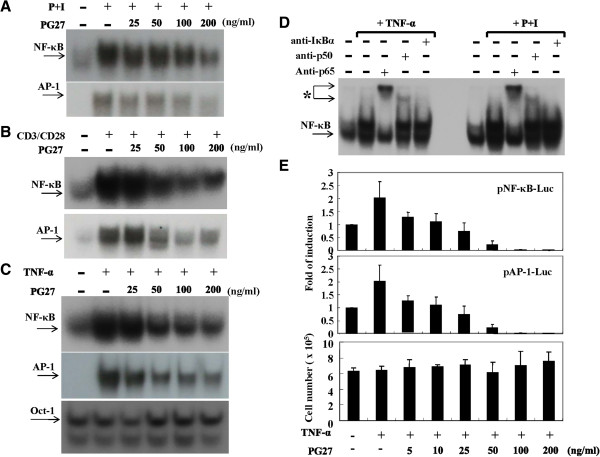Figure 2.

PG27 inhibited NF-κB and AP-1 activation induced by various stimuli. Human peripheral blood T cells at a concentration of 2 × 106/mL were pretreated with various concentrations of PG27 for 2 h and then stimulated with PMA + ionomycin for 2 h (A), CD3/CD28 for 6 h (B) or TNF-α for 6 h (C). The nuclear extracts were prepared and analyzed for both NF-κB and AP-1 DNA-binding activity by EMSA. As a control, the DNA-binding activity of Oct-1 was measured (C). In (D), before adding the radiolabeled oligonucleotides to the reaction mixture, the nuclear extracts were preincubated with 5 μl of the indicated mAb for 30 min. The asterisk indicates the supershifted bands. In (E), T cells at a concentration of 1 × 106/mL were mixed with pNF-κB-Luc or pAP-1-Luc reporter plasmids and transfection reagents. The transfection was performed using an Amaxa Nucleofector according to the manufacturer’s instructions. After transfection for 48 h, the cells were aliquoted equally for the individual conditions and pretreated with various concentrations of PG27 for 2 h. After stimulation with TNF-α for another 18 h, cells were collected and total cell lysates were analyzed for luciferase activity. Cell survival was determined by trypan blue exclusion assays. Representative data of at least 3 independent experiments are shown.
